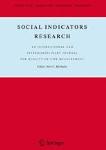Research article
 Authors: Francisco J. Goerlich and Ángel Soler
Authors: Francisco J. Goerlich and Ángel Soler
Title: Life Potential as a Basic Demographic Indicator
Source: Social Indicators Research
Abstract: This paper proposes an indicator that integrates life expectancy with the demographic structure of the population for a given society. By doing this, we have a simple indicator of mortality and aging combined, which could be very useful for developed societies. As is widely known, life expectancy at birth is independent of the demographic structure of the population, and therefore is adequate for measuring overall mortality. However, it neglects to take into account the fact that as life expectancy increases society ages, and so looking at life expectancy alone can produce an overly optimistic view of the development process, especially if we pay attention to future sustainability. Aging can in fact affect quality of life and sustainability in the long run. The indicators for aging are usually very crude, such as providing information on the share of the population who are 65 and over. We propose a simple indicator that integrates life expectancy at different ages, not only at birth, with the demographic structure of the population at a given point in time. The indicator has an intuitive interpretation in terms of the life potential, or biological capital, of society; and given that it is a weighted average, its changes can be easily decomposed into reductions in mortality (gains in life expectancy) and aging for different age intervals.
View article
Recommended citation:
Goerlich, F.J. and A. Soler, 2013. "Life potential as a basic demographic indicator", Social Indicators Research, January, pp. 537-548.






